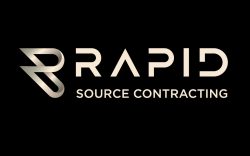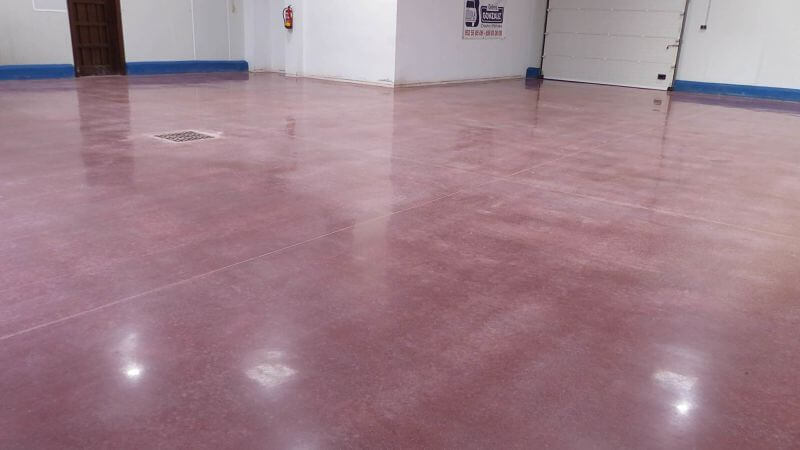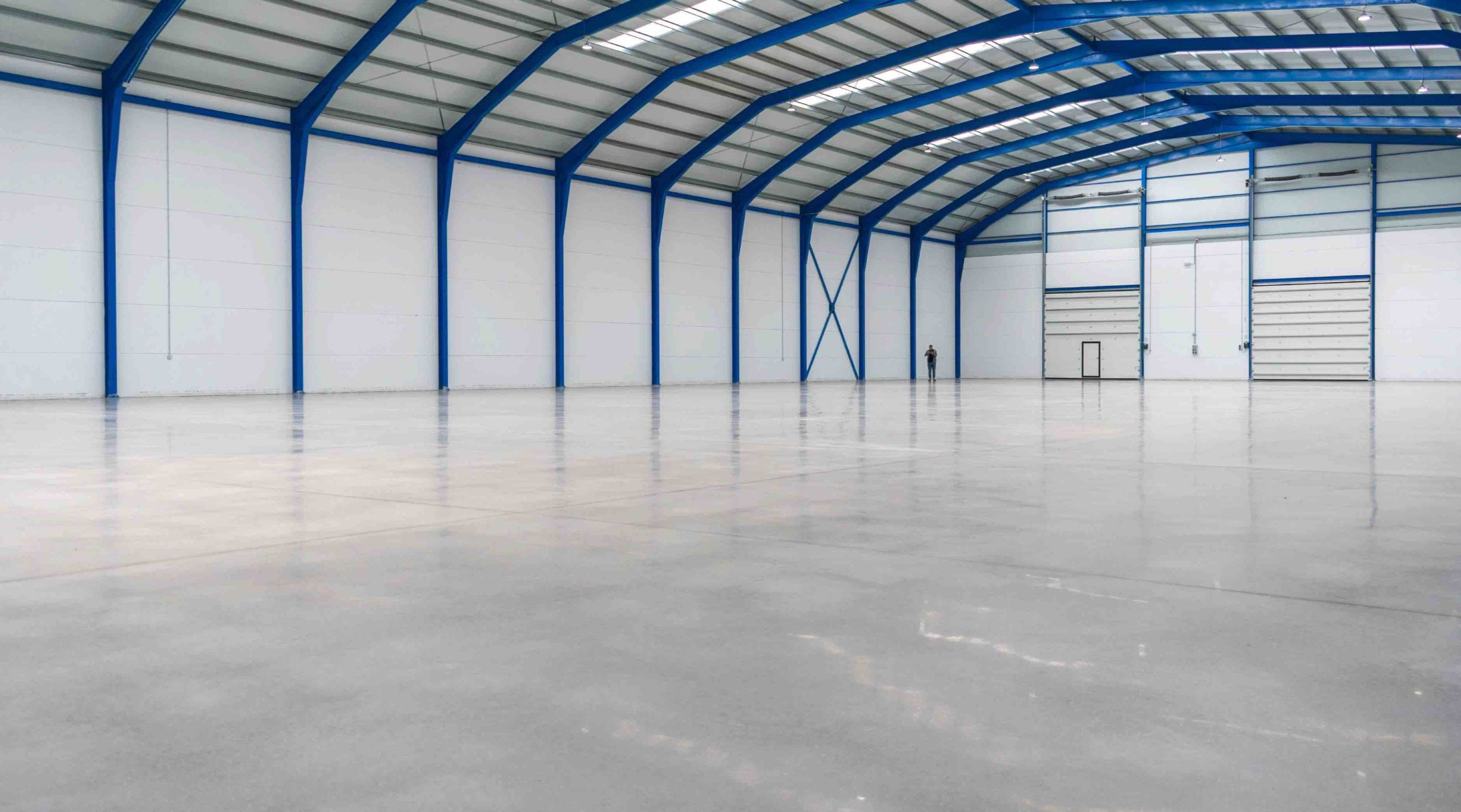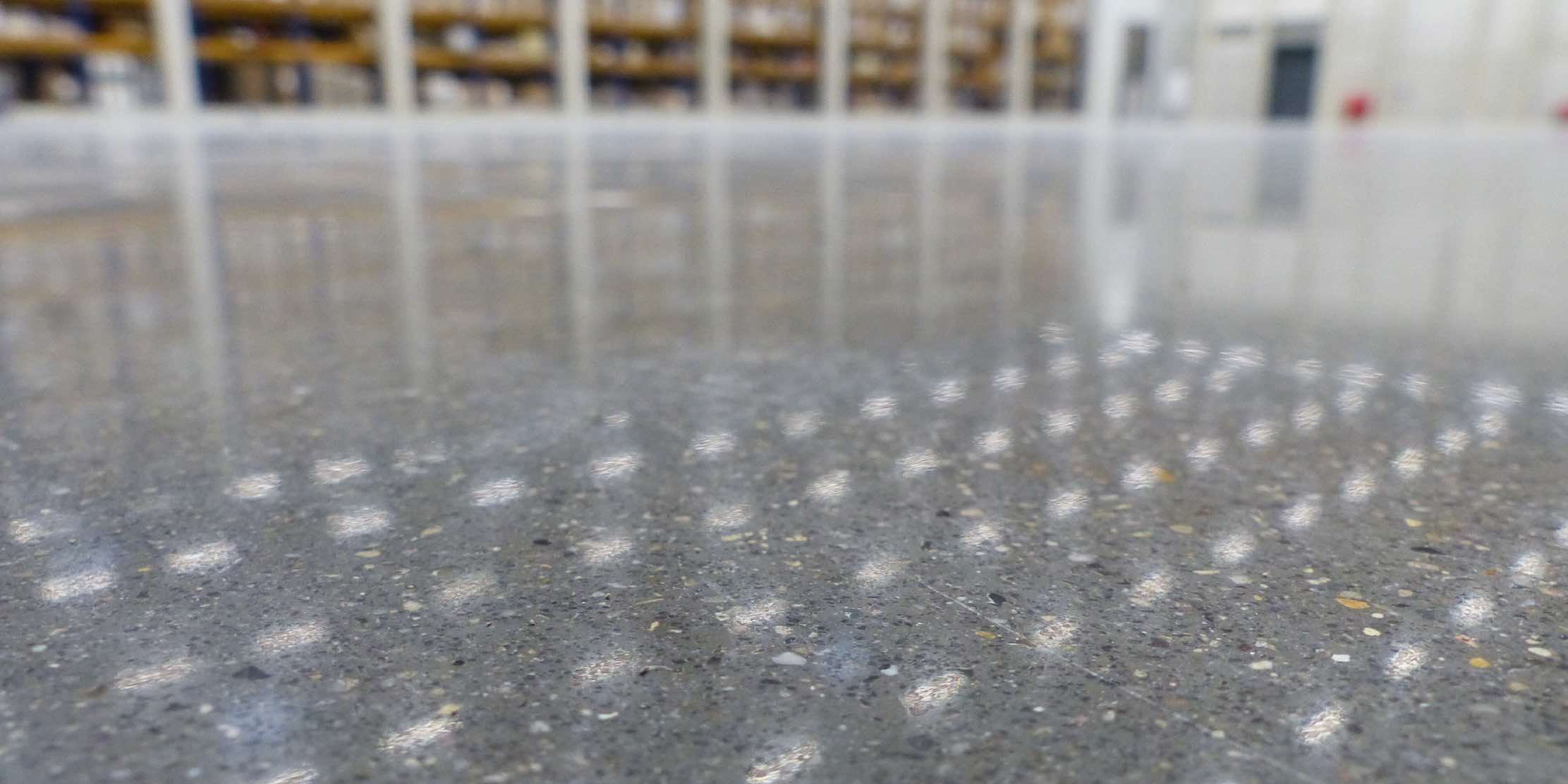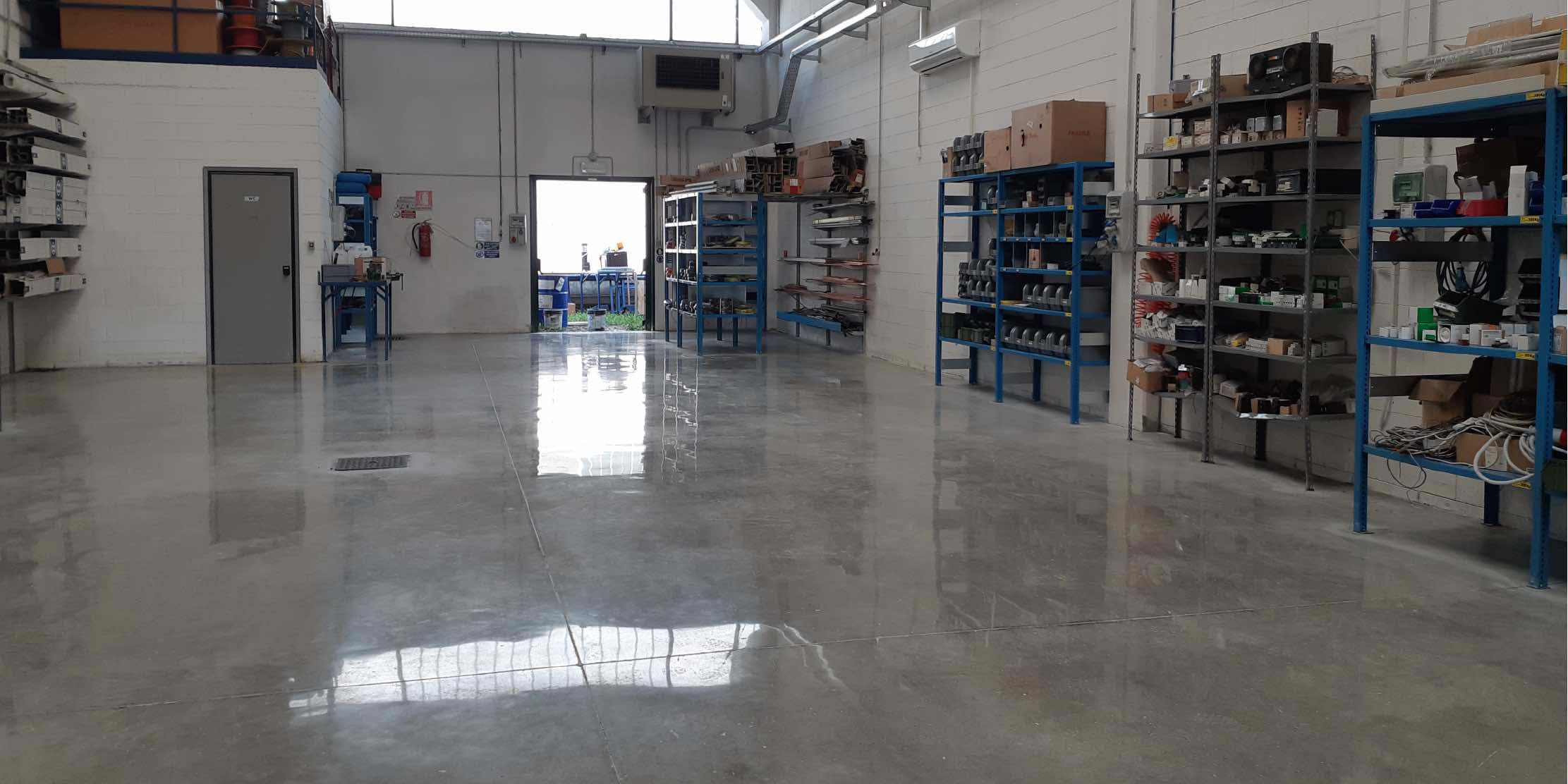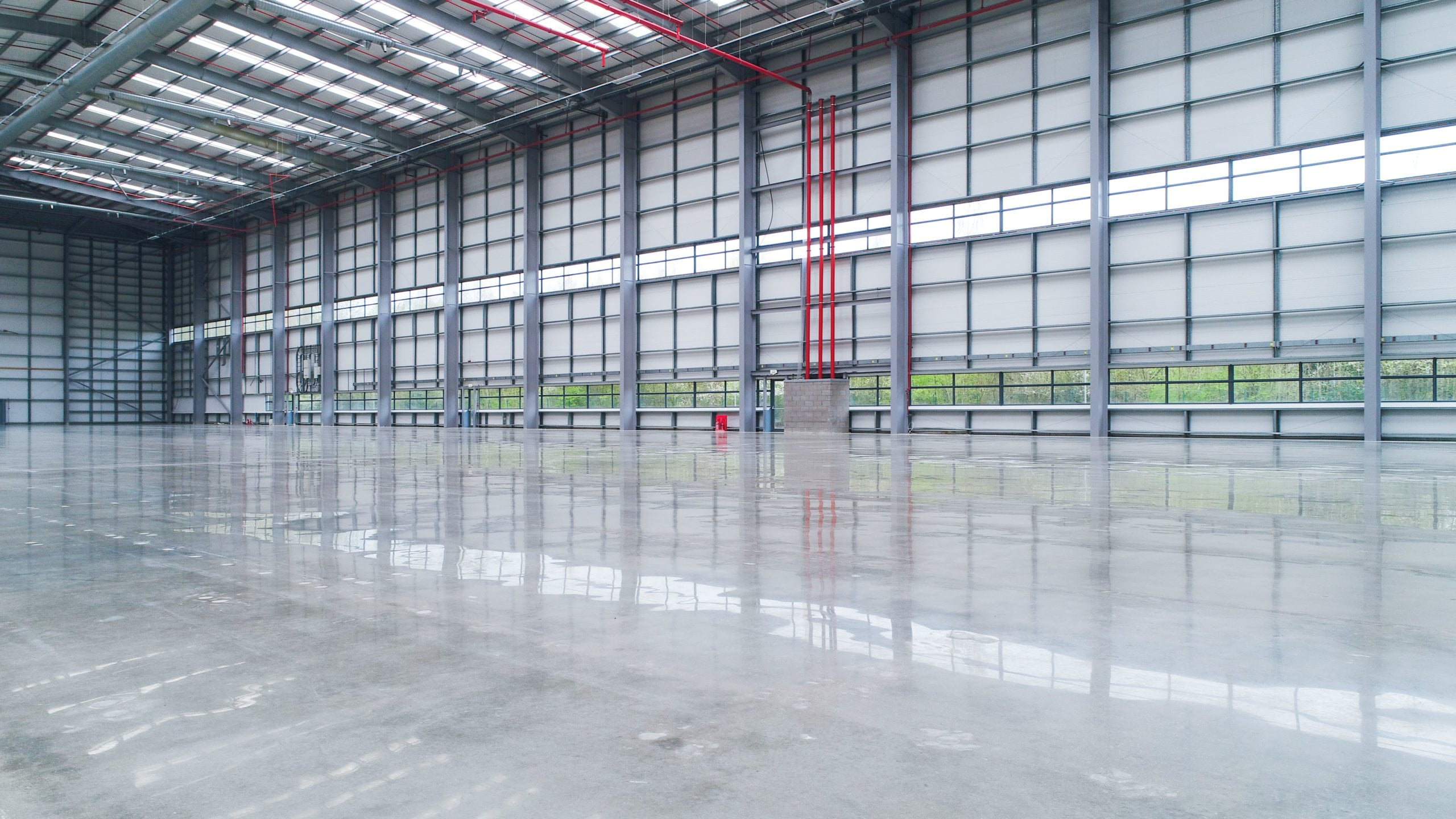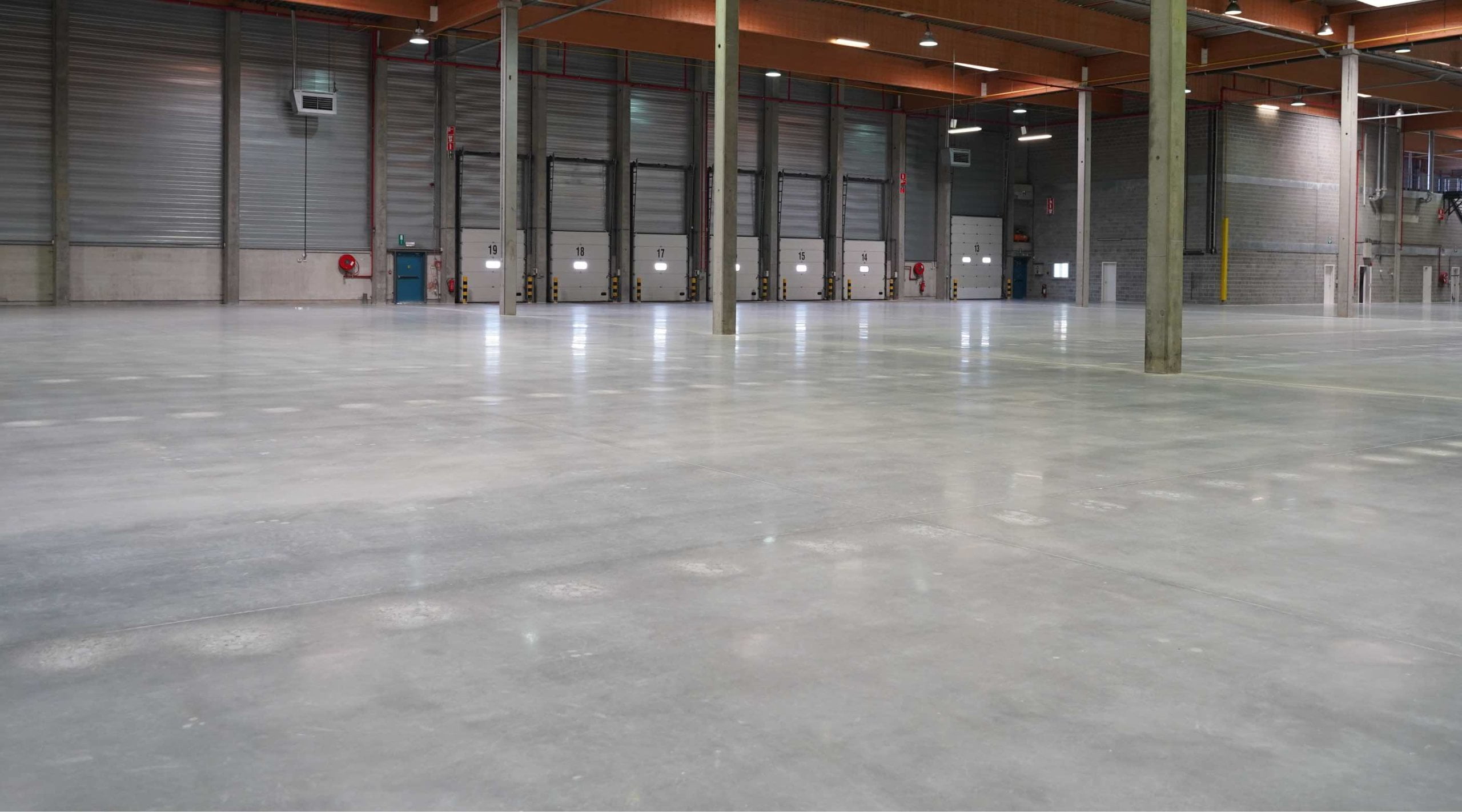Concrete Polishing
Polished concrete is rapidly becoming one of the most widely used uncoated flooring systems.
With appropriate equipment and experience, concrete applicators are able to polish surfaces, whether new or old and worn, to a high gloss finish that does not require waxes or surface coatings.
The keys to why polished concrete succeeds are these:
- Fast execution.
- Resistant to the transit of machinery.
- Dense and hard surface.
- Aesthetic finish.
- Easy to clean and maintain floor.
- Durable.
- Valid for almost any use.
Given the high durability and performance of polished concrete, it’s not surprising that more and more facilities such as commercial warehouses, logistic center’s, shopping center’s and even homeowners are using it for their flooring.
WHAT IS POLISHED CONCRETE?
Compare a polished concrete floor to a wooden panel. It’s use can be practical, but if you look for a finer finish, you have to grind and varnish that wood.
The same happens with concrete. It has been used for many years, mostly for structures, but also for floors, but there are some drawbacks that we will discuss later.
Polished concrete is obtained by a process of grinding and polishing the surface using abrasive pads, to achieve a smooth finish.
The final step is to seal the floor with a concrete sealer, and here there are two main types:
- Superficial sealer
- Penetrative sealer
Both sealers have different characteristics, we use sealers that penetrate into the core of the concrete and seal the concrete pores, this is more effective than surface sealers which lose their effectiveness through surface abrasion.
Polished concrete delivers the following features:
- High gloss finish
- Dense and hard surface
- Resistant to machinery traffic
- Ease of maintenance
MAIN POLISHED CONCRETE BENEFITS
It is not necessary to use environmentally harmful materials such as epoxy. The combination of grinding, polishing and the application of impregnations results in an abrasion-resistant, dust-free and very low-maintenance surface. Polished concrete is very easy to clean and has an impressive aesthetics.
Cost savings: It is not necessary to lay an additional floor. The existing concrete floor can be grinded and polished.
Longer life span
Polished floors are not sensitive to damage, this extends its life span.
Easy to clean
Polished concrete is dustproof and water repellent. This facilitates daily cleaning and reduces maintenance costs. Tire marks from forklift trucks or oil and grease stains are very easy to remove during daily cleaning.
Resistant to moisture
Polished concrete allows the floor to breathe and eliminates problems associated with other floor coverings, such as tiles, epoxy resin, etc
High light reflectivity
A bright and clean floor is important for warehouses and logistics center's. This saves energy costs in the long term, as the need for artificial lighting is reduced.
Sustainable alternative to floor coatings
Polished concrete requires no environmentally harmful coatings, cleaning agents or adhesives.
WHERE CAN POLISHED CONCRETE BE USED?
Large warehouses
Industrial facilities
Logistics center's
Car parks
Shopping center's
Retail stores
Hotels and restaurants
Office buildings
Showrooms
DO POLISHED CONCRETE FLOORS SLIP?
Polished concrete floors may look as smooth as glass, but they are completely safe to walk on when kept clean and dry.
They also tend to be less slippery than waxed parquet or polished marble. However, in public facilities with heavy pedestrian traffic, preventing accidents is an absolute priority.
- Keep polished floors free of oil, grease and water.Follow a routine maintenance schedule and clean up spills and stains as soon as possible.
- Placement of rubber carpets in high traffic entrances.
REQUIREMENTS FOR POLISHED CONCRETE FLOORS
- The surface to be treated must be smooth, therefore it is recommended to start from a troweled floor.
- It must be properly cured and hardened.
- Free of resins and paints.
- Free of screws, holes and imperfections.
Not all conditions can always be satisfied, which is why concrete floor preparation must be carried out in advance. In other posts we will explain what these stages are and how they must be carried out.
